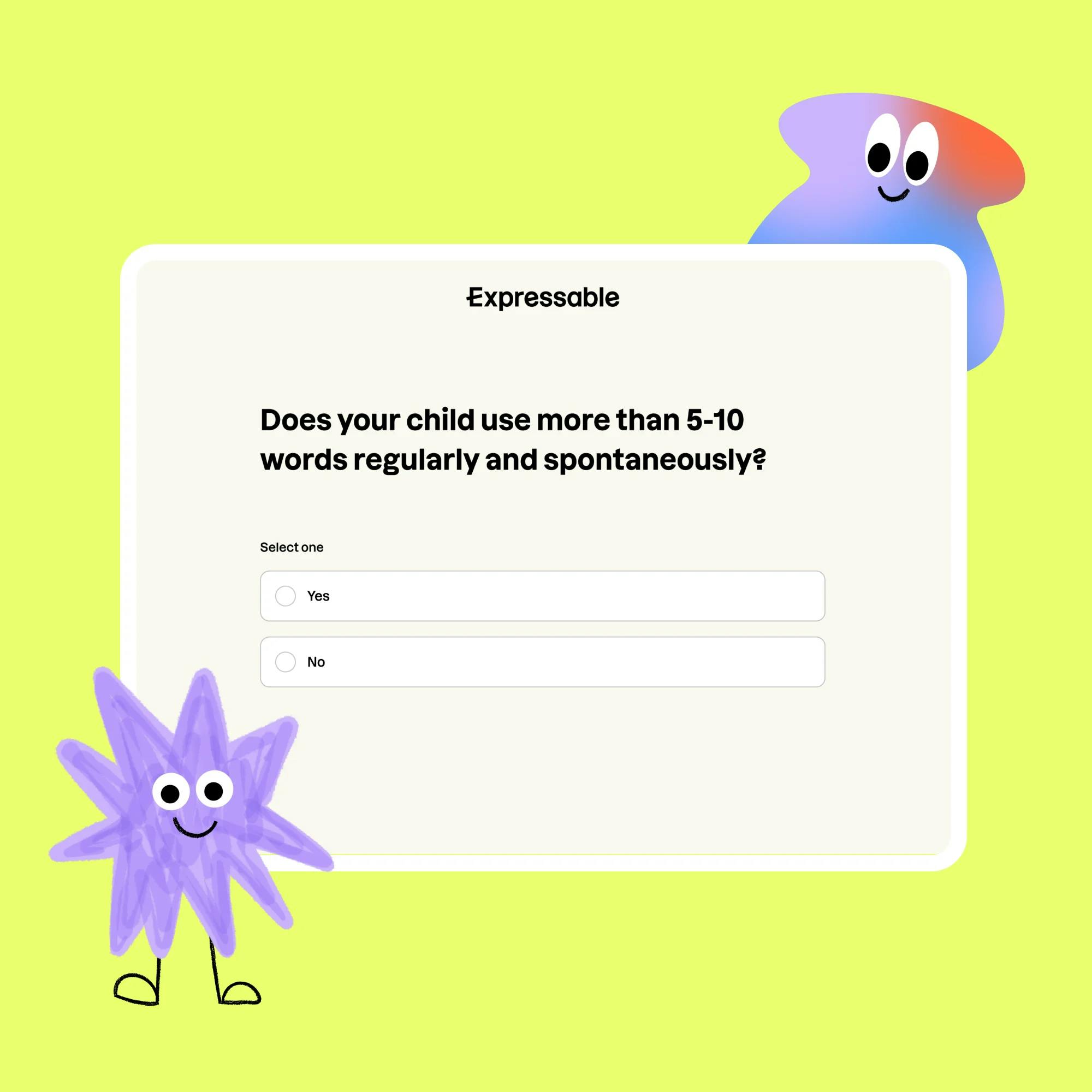
When Should You Consider Speech Therapy for Your Child?
 Leanne Sherred, M.S., CCC-SLP
Leanne Sherred, M.S., CCC-SLP
When it comes to a child's speech and language development, there’s one question that all parents have asked themselves at some point: “What’s normal?”
Children don’t come with a guidebook. And it can be hard to determine whether they’re reaching age-appropriate milestones, if professional help from a speech therapist is needed, and when to get started.
Communication issues such as speech errors, slight stuttering, and lack of comprehension are common in nearly all developing children. In a child’s early years, their brains are rapidly developing as they learn to talk and understand the world around them.
So what separates a bump in the road from a more serious issue? Will these speech errors naturally resolve on their own, or do they require intervention? What’s normal for other children their age? Let’s dive in.


What are speech and language problems?
While speech and language problems often intersect, there is an important distinction between them. The first step in recognizing speech or language impairments is understanding the difference.
Speech involves how children verbalize and articulate their communication. Children with speech difficulties may have trouble pronouncing certain sounds and letters (such as /s/ or /z/). They may have a hard time forming these sounds into intelligible sentences, and expressing their thoughts and opinions.
Speech delay, for example, is a common problem in young children. It's defined as not hitting certain developmental milestones expected for that age. This can be caused by a number of factors, including oral-motor problems such as trouble coordinating tongue, lip, and mouth movements needed to make sounds properly.
Stuttering is another example that affects millions of people. Stuttering is characterized by the disruption of speech due to the prolongation, repetition, or sudden stoppages of sounds.
Language disorders, on the other hand, affect how a person processes, interprets, and understands both verbal and nonverbal communication. Unlike speech problems, a child with a language disorder may pronounce words perfectly. However, in many cases they have a hard time organizing words together into sentences. They may struggle to learn and use new vocabulary or tell stories (expressive language disorder). Or they may have trouble understanding what someone is trying to communicate, defining words, or comprehending written text (receptive language disorder).
Typical speech and language milestones
Every child follows their own developmental timeline. Some kiddos are simply late talkers and will soon be rattling off a million words a minute. Others may show normal signs of speech and language progression and then suddenly hit a plateau or develop a stutter.
Regardless, there are certain milestones that children should meet within an expected age range.
3-12 months:
Communication extends far beyond verbal utterances. We use nonverbal communication everyday, such as gestures and facial expressions, to express our thoughts and feelings. Even before toddlers say their first words, they should be smiling, making eye contact, responding to social cues, babbling, painting, waving, playing, gesturing, etc. By 12 months old, children also begin to experiment with speech. They may try to imitate your sounds, say simple words like “mama,” and begin to make associations between objects and their names. If you notice your child isn't interacting with people at all, or is generally unresponsive, it’s a good idea to seek professional help from a speech therapist.


12-18 months:
At this age, children generally begin saying their first intelligible words. While their vocabulary will still be limited, they should be growing in their ability to use and understand verbal and nonverbal communication. They should also begin to understand and follow simple directions and recognize common names, items, and body parts.


24 months:
By 2 years old, children's speech and language should have rapidly progressed. They should not only have said their first words, but know as many as 50 words or more. In addition, children should begin to string these words together into simple phrases and questions, such as “milk please” or “bye-bye now?”
This is also the age where independent and spontaneous vocalizations become noticeable. In other words, they’re not just imitating or repeating your words, but expressing themselves on their own. While children this age won’t be understood 100% of the time, as a rule of thumb they should generally be speaking well enough to be understood by you and immediate family members at least 50% of the time.
Beyond 24 months:
At this point, whether your child has a speech or language impairment becomes quite apparent. Some red flags can include:
Limited vocabulary; isn’t saying many words
Inability to put words together and create simple phrases or sentences
Not being understood at least 75% of the time
Low levels of interactions (for example, not pointing when asked or answering questions)
Not understanding simple instructions and directions
Continuing to mispronounce vowels or rarely using consonants


When should children correctly pronounce sounds?
There are many sounds and letters in the English language that children master over time. It’s important to observe not only what your child is trying to say, but how they’re saying it. Mispronunciations of expected sounds by different ages can be another sign that your child would benefit from speech therapy.
While all children develop at their own pace, below are certain sounds that most English-speaking children should be using correctly.
By 3 months:
Your child has started making cooing sounds
By 5 months:
Laughs and makes playful sounds
By 6 months:
Makes speech-like babbling sounds like puh, ba, mi, da
By 1 year:
Starts putting sounds together to say things like mimi, upup, bababa
By 3 years:
Can use the following sounds well in words: /m/, /n/, /h/, /w/, /p/, /b/, /t/, /d/, /k/, /g/, and /f/
By 4 years:
Uses the following sounds in words: /y/ and /v/
By 6 years:
Uses the following sounds in words: /l/, /sh/, /ch/, and /j/
By 8 years:
Can correctly use all sounds, including those more difficult to pronounce, such as /r/, /s/, /z/, and /th/
Early intervention can lead to better outcomes
Communication can affect all aspects of a child’s life: their ability to express themselves and understand others, how they perform in the classroom, their motivation and confidence, and their mental health and socialization.
Therefore, it’s important for parents and caregivers to carefully observe their child’s communication strengths and challenges. While the “watch and wait” approach may be right for some children in certain situations, it also runs the risk of delaying necessary treatment. The longer a child uses improper speech and speech patterns, the longer they can take to correct, and the greater impact they can have on the child's quality of life.
While the “watch and wait” approach may be right in certain situations, it also runs the risk of delaying necessary treatment.
So if you notice your child struggling to communicate, or if speech errors are affecting their day-to-day lives and interactions, seek a comprehensive evaluation from a certified speech-language pathologist. These communication experts can make a clinical recommendation about “if and when” your child should begin therapy.
An easy way to start is by taking our simple online screener. Your personalized results will let you know if a speech evaluation would be helpful for your child.
Again, there’s no simple formula for determining exactly when a child should start speech therapy. What’s important is that you watch for any potential issues, speak regularly with your pediatrician, and if necessary, seek an evaluation from a speech therapist. Generally, the earlier you can intervene and start working on strategies to fix or compensate for your child's communication challenges, the more progress your child will make.













